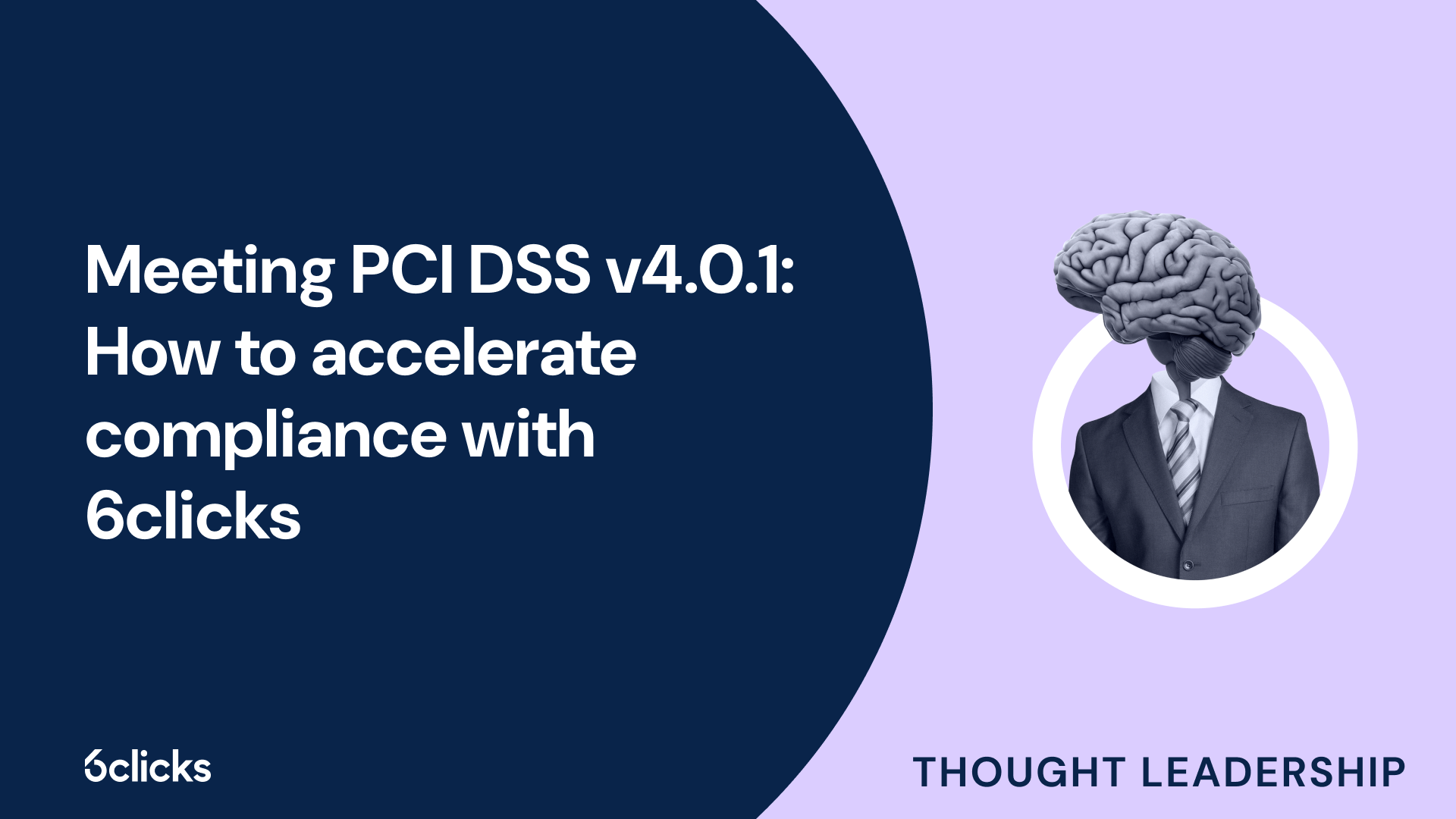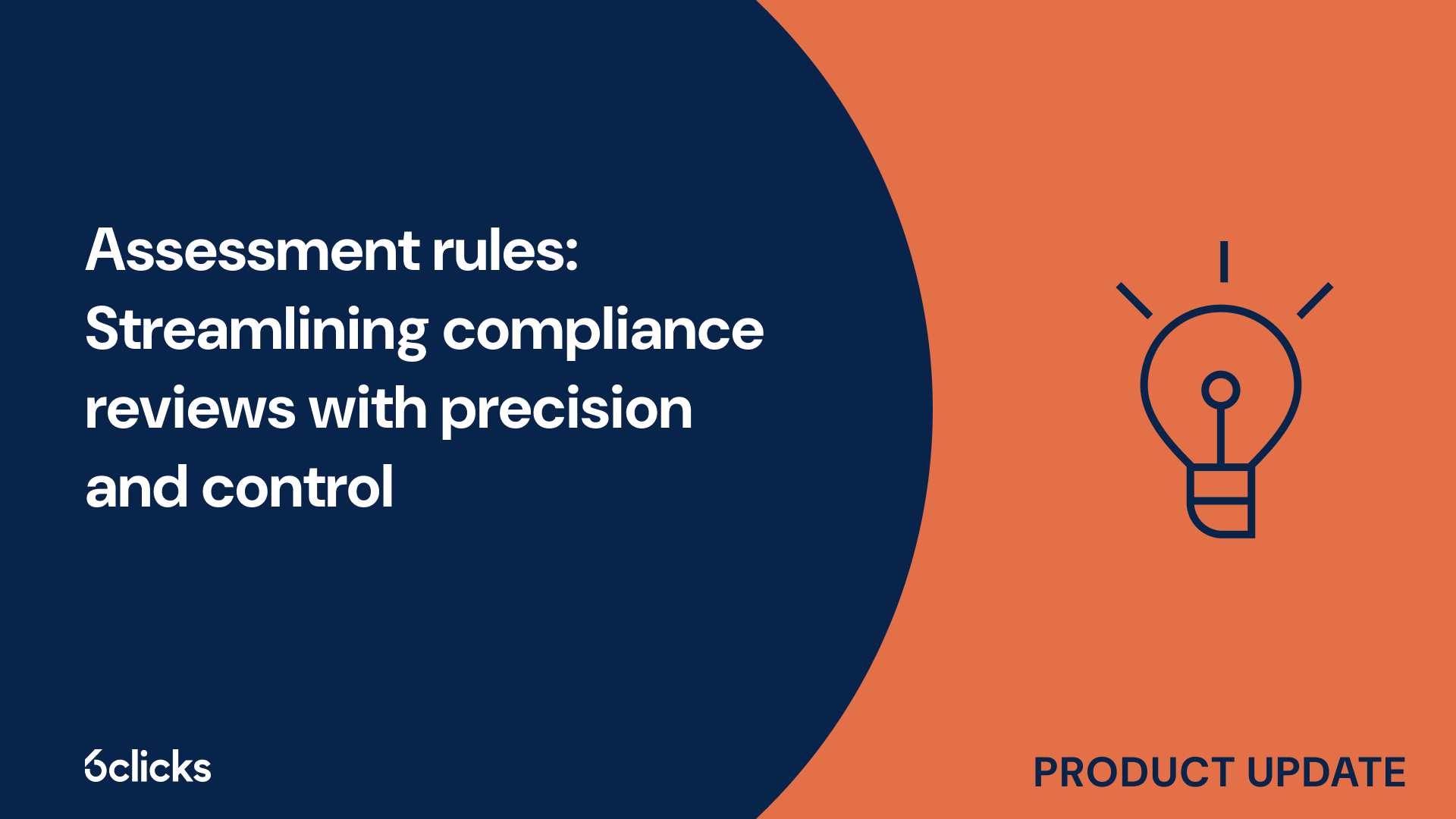Cyber resilience in 2025: Your smart guide to NIST CSF
Boost your organization's cyber resilience with this expert guide to the NIST Cybersecurity Framework. Learn to assess risk, improve security posture, and automate compliance with AI-powered tools.
-1.png?width=200&height=249&name=Group%20193%20(1)-1.png)
Cyber resilience in 2025: Your smart guide to NIST CSF
What are NIST standards?
NIST, or the National Institute of Standards and Technology, is a non-regulatory agency of the United States federal government. It is responsible for developing and promoting measurement standards, technology, and innovation in various industries. In the realm of cybersecurity, NIST is widely recognized for its development and publication of standards and guidelines that help organizations, including government agencies and businesses, manage and mitigate cybersecurity risks. The NIST cybersecurity standards outline best practices and provide a framework for organizations to enhance their cybersecurity posture and protect against cyber threats. These standards cover a wide range of areas, including risk assessment and management, access control, incident response planning, and asset management. By following NIST standards, organizations can improve their approach to cybersecurity management and strengthen their defense against cybersecurity attacks, thereby ensuring the security of critical infrastructure services and promoting economic and national security.
The role of the national institute of standards and technology (NIST)
The National Institute of Standards and Technology (NIST) plays a vital role in promoting innovation and industrial competitiveness in the United States. As a non-regulatory agency of the federal government, NIST works to advance technological innovation and support the growth of businesses through various initiatives.
One of the key functions of NIST is the development and maintenance of standards. NIST standards provide a framework for organizations, both in the public and private sectors, to establish best practices and ensure the quality of products and services. These standards cover a wide range of areas, including cybersecurity, measurement, manufacturing, and information technology.
In addition to standards development, NIST also conducts investigations into building collapses. These investigations help uncover the causes of structural failures and provide recommendations to prevent similar incidents in the future. By analyzing and disseminating this information, NIST contributes to the safety and resilience of critical infrastructure and protects lives and property.
Through its work, NIST supports the nation's economy and enhances its global industrial competitiveness. By providing businesses and government agencies with the tools, technology, and research they need, NIST enables innovation and ensures that the United States remains at the forefront of scientific and technological advancements.
Purpose of NIST standards
NIST standards serve a crucial purpose in guiding federal agencies, organizations, and contractors to ensure compliance with cybersecurity and risk management practices. These standards provide a comprehensive framework that establishes guidelines, requirements, and best practices for securing and protecting sensitive information and systems.
In the ever-evolving landscape of cyber threats and attacks, NIST standards help organizations understand and address the potential risks they face. By following these guidelines, organizations can establish effective security controls, assess their risk tolerance, and develop appropriate cybersecurity strategies. This ensures that they are well-prepared to detect, respond to, and recover from cybersecurity incidents.
Furthermore, NIST standards play a pivotal role in the development and maintenance of secure and resilient systems. By setting industry-wide standards, NIST promotes uniformity in cybersecurity practices across various sectors. This not only enhances the overall security posture but also facilitates interoperability and information sharing among different entities.
By adhering to NIST standards, federal agencies, organizations, and contractors can demonstrate their commitment to cybersecurity and risk management. It also enables them to maintain compliance with applicable regulations and contractual obligations, instilling trust and confidence among stakeholders.
Core functions and purposes of NIST standards
The National Institute of Standards and Technology (NIST) standards serve several crucial functions and purposes in the realm of cybersecurity. Firstly, they provide comprehensive guidance to organizations on how to effectively manage and mitigate cybersecurity risks. By implementing NIST standards, organizations can establish robust security controls, assess their risk tolerance, and develop appropriate cybersecurity strategies to protect their systems, networks, and sensitive data.
NIST standards also play a vital role in maintaining security across various sectors by promoting uniformity in cybersecurity practices. They set industry-wide standards that organizations can adhere to, ensuring a consistent and reliable approach to cybersecurity management. This not only enhances the overall security posture but also facilitates interoperability and information sharing between different entities.
Moreover, complying with NIST standards allows federal agencies, organizations, and contractors to demonstrate their commitment to cybersecurity and risk management. By adhering to these standards, they are able to maintain compliance with applicable regulations and contractual obligations, instilling trust and confidence among stakeholders.
Risk identification & analysis
Risk identification and analysis are critical components of the cybersecurity management process, guided by NIST standards. Within the NIST framework, organizations at Tier 2 focus on risk-informed decision making and prioritize their risk management efforts.
The first step in risk identification is to systematically identify potential cybersecurity risks by conducting a thorough assessment of the organization's assets, such as systems, networks, and data. This involves understanding the business environment, critical infrastructure services, and the potential impact of cyber threats on the organization's core functions. Gathering information from various sources, including threat intelligence and historical cybersecurity events, can help in identifying a wide range of potential risks.
To effectively analyze these risks, organizations should assess and prioritize them based on their potential impact and likelihood of occurrence. This includes evaluating the vulnerabilities and existing controls, as well as the potential consequences of cybersecurity attacks. Organizations should also consider their risk tolerance, business requirements, and the potential for economic or reputational damage.
Based on the analysis, organizations can prioritize risks by considering their risk objectives, such as protecting critical assets or maintaining business continuity. This prioritization allows organizations to allocate appropriate resources and implement targeted security controls to mitigate the identified risks effectively.
The NIST standards provide further guidance on the risk identification and analysis process, ensuring a comprehensive and systematic approach that aligns with best practices and industry standards. By following these guidelines, organizations can establish a risk-informed cybersecurity management program that effectively addresses the evolving cyber threat landscape.
Access control & authorization
NIST standards play a crucial role in addressing access control and authorization in organizations. These standards provide guidance on how organizations should manage and control access to their systems, networks, and data.
Access control is the process of determining who can access specific resources and what actions they can perform. NIST standards outline best practices for implementing access control mechanisms, such as user authentication, strong passwords, and multifactor authentication. These standards also emphasize the importance of regularly reviewing and updating access permissions to ensure that only authorized individuals have access to sensitive data.
Authorization, on the other hand, involves granting or denying specific privileges to authenticated users based on their roles and responsibilities. NIST standards provide guidelines for implementing robust authorization mechanisms, such as role-based access control (RBAC) and attribute-based access control (ABAC). These mechanisms help organizations ensure that users have the appropriate level of access to perform their job functions while preventing unauthorized access to sensitive data.
By adhering to NIST standards, organizations can effectively protect sensitive data and prevent unauthorized access. These standards help organizations establish and enforce access control policies and procedures, reducing the risk of data breaches and insider threats. Implementing strong access controls also enhances the organization's overall cybersecurity posture and helps meet compliance requirements.
One notable framework provided by NIST is the NIST Cybersecurity Framework (CSF). The CSF offers a comprehensive approach to managing and reducing cybersecurity risk. The Identify stage of the framework assists organizations in understanding their current cybersecurity posture by identifying and prioritizing their assets, such as sensitive data, systems, and networks.
During the Identify stage, organizations conduct an inventory of their assets and perform risk assessments to determine the potential impact of cybersecurity events. This stage helps organizations identify the critical data that needs to be protected and establishes a baseline for implementing appropriate access control and authorization measures.
Continuous monitoring & response planning
Continuous monitoring and response planning are essential components of the NIST standards for cybersecurity. These practices contribute to an iterative, long-term approach to cybersecurity, allowing organizations to adapt and respond to evolving threats.
Continuous monitoring involves the ongoing assessment of an organization's security controls and systems to ensure their effectiveness. It provides real-time visibility into the organization's cybersecurity posture, enabling proactive identification and mitigation of vulnerabilities and security events. By continuously monitoring their systems, organizations can detect and respond to security incidents promptly, minimizing the impact and potential damages caused by cyber threats.
Response planning is the process of developing strategies and procedures for effectively responding to cybersecurity incidents. It involves outlining the steps to be taken in the event of a breach or attack, including incident detection, containment, eradication, and recovery. Response planning ensures that organizations have a predefined roadmap to follow during an incident, enabling them to swiftly and accurately respond to the incident and minimize its impact.
Implementing continuous monitoring and response planning as per NIST standards offers several benefits. It helps organizations maintain an up-to-date understanding of their cybersecurity posture, enabling them to identify and address vulnerabilities promptly. Continuous monitoring also facilitates the early detection of potential cyber threats, allowing organizations to take proactive measures to mitigate risks before they result in significant damages.
By integrating response planning into their cybersecurity practices, organizations can effectively and efficiently manage incidents. Having predefined response procedures in place enables a swift and coordinated response to cyber threats, reducing the time needed to recover and minimizing the impact on operations. Moreover, continuous monitoring and response planning contribute to a state of continuous compliance, ensuring that organizations remain aligned with the NIST Cybersecurity Framework (CSF) and other regulatory requirements.
Security framework & core functions implementation
The implementation of the security framework and core functions in accordance with NIST standards is crucial for establishing a robust cybersecurity program. One of the foundational steps in this process is the Identify function, which emphasizes the need for organizations to develop a comprehensive understanding of their IT assets and their criticality.
Developing an accurate IT asset inventory is essential for effective cybersecurity management. Organizations must identify and categorize their assets, including hardware, software, and data, to assess their criticality in supporting business operations. This information helps prioritize cybersecurity efforts and allocate resources accordingly.
Furthermore, vulnerability discovery plays a vital role in the implementation of the security framework. By conducting regular vulnerability assessments and penetration testing, organizations can identify weaknesses in their systems and take measures to address them promptly. This approach aligns with the NIST Cybersecurity Framework's objective of continuously monitoring and assessing security controls.
Aligning cybersecurity program functions with the NIST Cybersecurity Framework provides a structured approach to managing cybersecurity risks. By integrating the Identify, Protect, Detect, Respond, and Recover functions, organizations can establish a proactive and well-rounded cybersecurity program. Each of these core functions contributes to enhancing the organization's overall cybersecurity posture and resilience.
Types of NIST standards and resources
The National Institute of Standards and Technology (NIST) develops and promotes a wide range of cybersecurity standards and resources to support organizations in managing and mitigating cybersecurity risks. These standards and resources are essential for organizations seeking to enhance their cybersecurity posture and protect themselves against cyber threats. NIST provides guidance and frameworks that can be customized and implemented based on an organization's unique needs and risk tolerance. Some of the key NIST standards and resources include the NIST Cybersecurity Framework (CSF), the NIST Special Publication (SP) series, and the NIST Risk Management Framework (RMF). These resources offer organizations practical and actionable guidance on identifying, protecting, detecting, responding to, and recovering from cybersecurity incidents. The NIST standards and resources provide a robust foundation for organizations to strengthen their cybersecurity practices and effectively manage cyber risks in today's evolving threat landscape.
Cybersecurity framework (CSF)
The NIST Cybersecurity Framework (CSF) serves as a voluntary guidance for organizations in managing and reducing cybersecurity risk. Developed by the National Institute of Standards and Technology (NIST), the CSF has become a global standard recognized as industry best practice.
The framework provides a detailed set of controls and guidelines to help organizations address and mitigate cybersecurity risks. It offers a holistic and flexible approach to cybersecurity management, allowing organizations to customize their cybersecurity strategies based on their unique business requirements and risk tolerance.
The NIST CSF focuses on five core functions: Identify, Protect, Detect, Respond, and Recover. These functions help organizations develop a comprehensive understanding of their cybersecurity posture, implement security controls, and establish effective detection and response planning. Additionally, the CSF emphasizes continuous monitoring and assessment, ensuring organizations are aware of cybersecurity events and can prioritize and adapt their cybersecurity practices accordingly.
By following the NIST CSF, organizations can enhance their awareness of cybersecurity risk, improve their cybersecurity posture, and effectively manage and respond to cybersecurity attacks and incidents. While voluntary, the framework has been widely adopted by organizations across various sectors, including federal agencies, government contractors, and critical infrastructure services, due to its efficacy in addressing evolving cyber threats and promoting economic security.
Special publications (SPs)
Special publications (SPs) are a series of guidelines and recommendations developed by the National Institute of Standards and Technology (NIST) to assist organizations in improving their cybersecurity practices. These publications provide detailed information and best practices on a wide range of cybersecurity topics.
SPs cover various aspects of cybersecurity, including risk management, access control, incident response, and security assessment. They are designed to be flexible and adaptable, allowing organizations to select and implement the recommendations that are most relevant to their specific needs and requirements.
For example, SP 800-53 provides a comprehensive catalog of security controls that organizations can use to protect their information systems. SP 800-61 offers guidance on incident response, helping organizations develop effective plans and procedures to detect, respond to, and recover from cybersecurity incidents.
These SPs are widely recognized and utilized by both public and private sector organizations. They serve as valuable resources for enhancing cybersecurity practices, assisting organizations in maintaining the confidentiality, integrity, and availability of their information and systems.
By following the guidance provided in SPs, organizations can strengthen their cybersecurity posture, improve their ability to prevent and detect cyber threats, and effectively respond to incidents when they occur.
Federal information processing standard (FIPS) publications
Federal Information Processing Standard (FIPS) publications are a crucial component of the National Institute of Standards and Technology's (NIST) cybersecurity standards. These publications provide guidelines and requirements for managing information security in U.S. federal government agencies and organizations.
FIPS publications establish the minimum security requirements that federal information systems must meet to ensure the confidentiality, integrity, and availability of sensitive data. These standards are essential for protecting critical information and infrastructure from cybersecurity threats.
By adhering to FIPS publications, federal agencies can ensure that their information systems are aligned with industry best practices and consistently meet security requirements. These guidelines cover a wide range of topics, including access controls, identity management, cryptography, and security assessment.
NIST, as a non-regulatory agency, develops FIPS publications to promote the security and resilience of federal information systems. These standards are mandatory for federal government agencies and serve as authoritative references for non-federal organizations as well.
IT security automation guidebook (IT-SAG)
The IT Security Automation Guidebook (IT-SAG) is a valuable resource provided by the National Institute of Standards and Technology (NIST) to assist organizations in implementing and improving their cybersecurity program. This guidebook offers a comprehensive framework for organizations to automate their security processes and streamline their cybersecurity operations.
By leveraging the IT-SAG, organizations can enhance their efficiency in managing IT security by automating repetitive tasks and reducing the reliance on manual processes. This automation allows for quicker response times, increased accuracy, and minimized human error, resulting in more effective security operations.
One of the key features of the IT-SAG is its ability to ensure the consistent application of security controls across the organization. By automating security processes, organizations can establish standardized procedures that are consistently followed, reducing the risk of vulnerabilities or gaps in security.
The IT-SAG also provides benefits such as improved scalability, as automation allows organizations to handle a larger volume of security events without increasing the burden on human resources. It also enables organizations to better allocate resources, as automated processes can handle routine security tasks, freeing up security teams to focus on higher-value activities.
Computer security division publications & subscription services
The Computer Security Division (CSD) of the National Institute of Standards and Technology (NIST) offers a variety of publications and subscription services to assist government agencies and organizations in implementing and improving their cybersecurity programs.
NIST's CSD publications cover a wide range of topics related to computer security, providing guidance, best practices, and standards that organizations can follow to enhance their cybersecurity posture. These publications address various areas such as risk management, access control, incident response planning, and identity management. They provide detailed information on recommended security controls and strategies, helping organizations align their security practices with industry standards.
In addition to publications, the CSD offers subscription services that provide access to regular updates, news, and alerts on emerging cybersecurity threats and vulnerabilities. By subscribing to these services, government agencies and organizations can stay informed about the latest cyber threats and enhance their awareness of cybersecurity risk.
These resources from the NIST CSD are invaluable for government agencies and organizations in implementing and improving their cybersecurity programs. By following the guidance provided in the publications, organizations can establish robust cybersecurity practices that mitigate the risk of cyber threats and ensure the protection of critical assets. The subscription services keep organizations updated on the evolving threat landscape, enabling them to respond effectively to cybersecurity events and adapt their security strategies accordingly.
Advantages of using NIST standards in government agencies and organizations
Using NIST standards in government agencies and organizations provides numerous advantages, specifically in the areas of data and network security, regulatory compliance, and eligibility for government contracts. Compliance with NIST standards ensures that data and networks are secured against cyber threats and vulnerabilities, reducing the risk of unauthorized access, data breaches, and other cybersecurity incidents.
Moreover, adherence to NIST standards helps organizations comply with regulations such as the Federal Information Security Management Act (FISMA) and the Health Insurance Portability and Accountability Act (HIPAA). These regulations mandate stringent security measures and requirements for the protection of sensitive information. By implementing NIST standards, organizations can demonstrate their commitment to data security and maintain compliance with these regulations, avoiding potential legal troubles and penalties.
Furthermore, NIST compliance is often a requirement for organizations seeking government contracts. Many government agencies require contractors and vendors to follow specific cybersecurity standards, and NIST standards are often considered the gold standard. By adhering to NIST standards, organizations can demonstrate their dedication to security best practices, increasing their chances of being awarded government contracts and gaining the trust of their clients and stakeholders.







